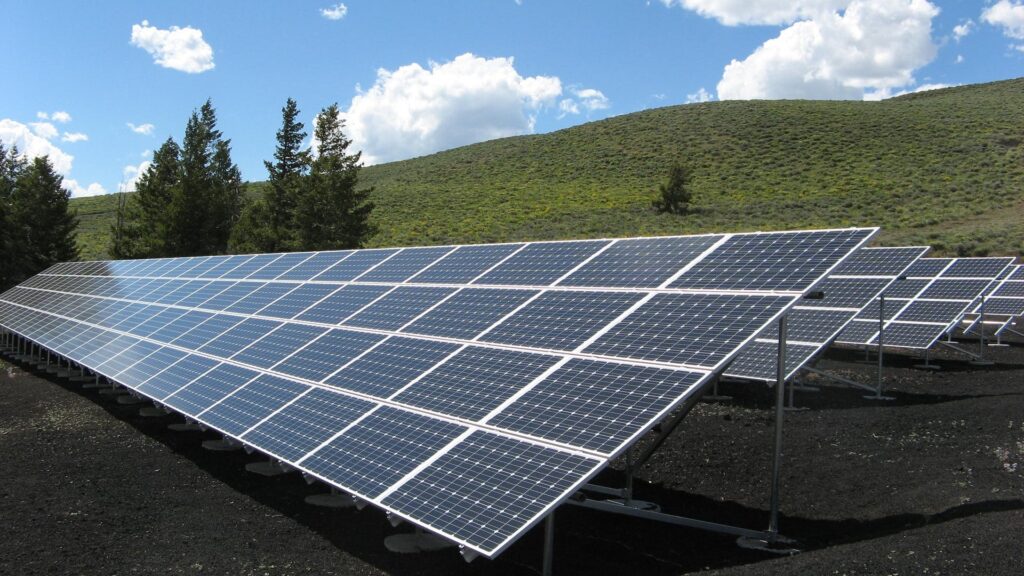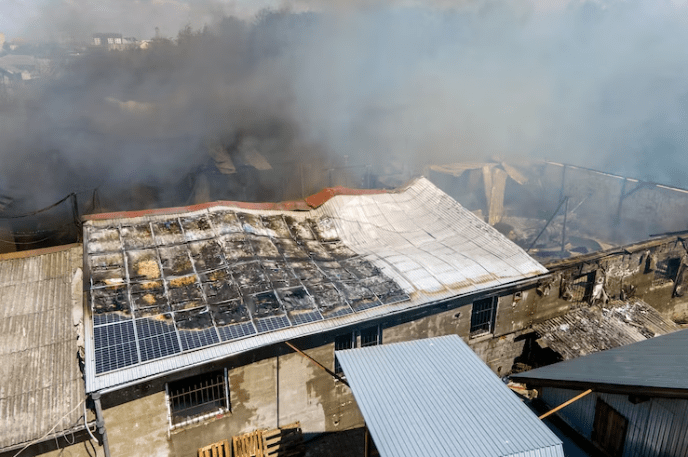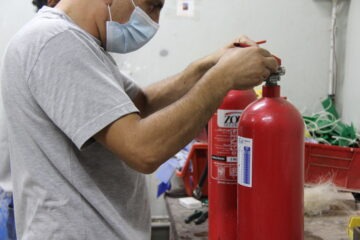Solar energy represents a significant leap forward in clean, sustainable power generation. However, alongside its numerous benefits, there’s a less-discussed concern—fire risks within solar systems. Despite being uncommon, these incidents can pose serious threats. This article delves into the world of solar power, specifically focusing on the often-overlooked aspect of fire safety measures. It sheds light on the risks associated with solar setups and highlights crucial steps needed to ensure safety and security within this growing industry.
Introduction
- Overview of Solar Power in Renewable Energy
- Unveiling the Risks: Fires in Solar Systems and Farms
Fire Safety Measures in Solar Systems
- Understanding Rare yet Impactful Fire Incidents
- Identification of Primary Fire Hazards
- Limitations of Fireproofing in Solar Panels
Critical Fire Safety Measures for Solar Emergencies
- Risks Posed to Firefighters during Solar System Fires
- Specialized Emergency Response Strategies
- Importance of Automatic Fire Suppression Systems
Safeguarding Infrastructure: Prioritizing Fire Safety Measures
- Responsibility in Managing Risks in Solar Technology
- Proactive Approach to Address Vulnerabilities
- Mitigating Risks and Enhancing Resilience in Solar Farms
Implementing Fire Safety Measures in Renewable Energy
In the world of renewable energy, solar power stands out for its promise of a cleaner, brighter future. We’ve seen its impact—how it transforms sunlight into electricity, powering homes and communities. But beyond its bright image lies a lesser-known reality: the risk of fires lurking within solar systems and farms.
While these incidents are rare, they can cause significant disruptions. Lives are affected, communities are shaken, and businesses are faced with unexpected challenges in an industry striving for progress.
This contrast between the potential of solar energy and the hidden dangers it poses highlights a complex narrative. It’s not just about the benefits; it’s also about recognizing and managing the risks. As we navigate the changing landscape of renewable energy, it’s crucial to understand and address these vulnerabilities to ensure solar power continues to shine without casting shadows of uncertainty.
This article delves into the delicate landscape of solar system fires, shedding light on the underlying risks and pivotal fire safety measures imperative within the solar industry.

Fire Safety Measures in Solar Systems
While incidents of solar system and solar farm fires are infrequent, their consequences for life, safety, and business sustainability cannot be overstated. The solar industry has taken substantial steps to comprehensively understand fire risks and enact targeted fire safety strategies.
Fires within solar systems often trace back to cables, junction boxes, and inadequately protected inverters, which serve as primary fire hazards. Despite their rarity, solar panels are not inherently fireproof and can escalate destruction during a fire event.
Critical Fire Safety Measures for Solar Emergencies
During a fire, solar panels continue to generate DC current, posing risks to firefighter safety. Implementing specialized emergency response strategies for solar power systems becomes paramount to managing the blaze without increasing electrocution risks.
Installing automatic fire suppression systems in high-risk areas proves crucial. These systems swiftly detect and suppress fires, issuing alerts, shutting down the system, and disconnecting the inverter.
The extent of damage during a fire influences replacement costs and solar farm downtime. Robust fire suppression systems lessen fire spread and safeguard against catastrophic consequences, fortifying the industry’s foundation for sustainable growth.

Prioritizing Fire Safety Measures for Sustainable Infrastructure
In conclusion, as solar energy revolutionizes the way we produce power, it brings to the forefront a critical responsibility: effectively managing the potential risks is essential to this growing technology.
This transformation isn’t solely about harnessing renewable energy; it’s about safeguarding its potential. Understanding and implementing robust fire safety measures stand as cornerstones for ensuring the reliability and security of solar systems.
Recognizing the vulnerability of components within solar infrastructure and addressing these vulnerabilities proactively is paramount. This proactive approach, coupled with specialized emergency response strategies tailored for solar setups, mitigates risks, particularly in fire emergencies where the continued generation of DC current poses significant hazards to responders.
Investing in automatic fire suppression systems and comprehensive safety protocols not only minimizes damage but also reinforces the flexibility of solar farms, reducing downtime and replacement costs. Ultimately, these measures strengthen the promise of solar energy—a promise upheld responsibly, ensuring a secure, sustainable future for all who benefit from this brilliant innovation.
For any inquiries contact ZOD below.




0 Comments